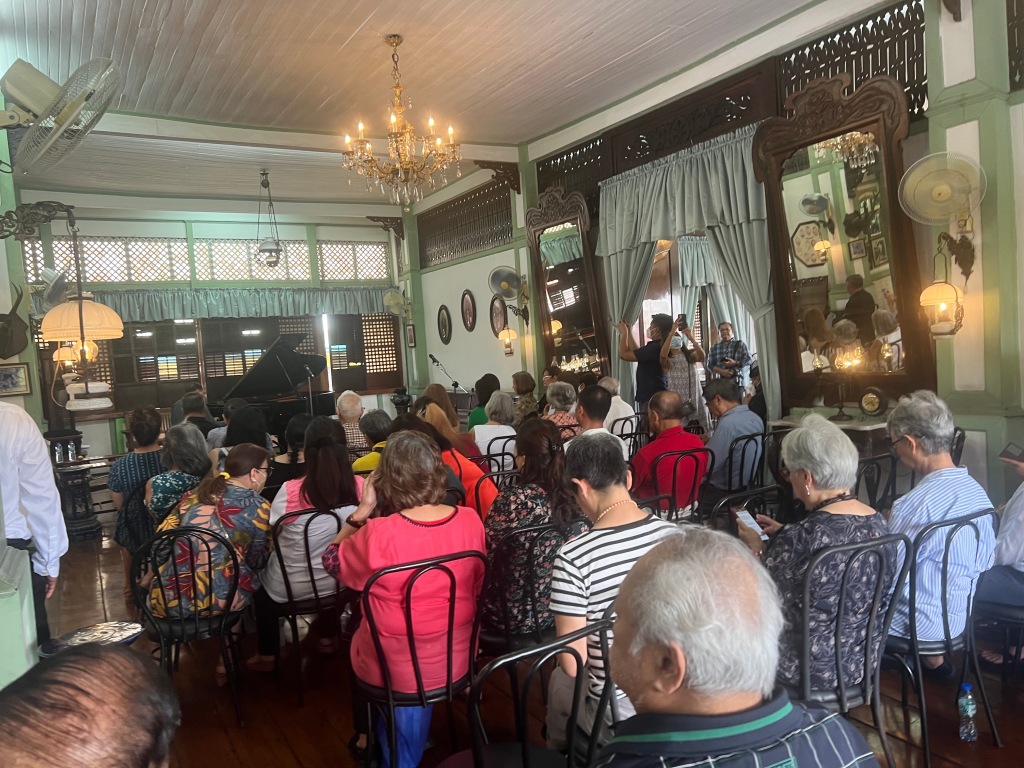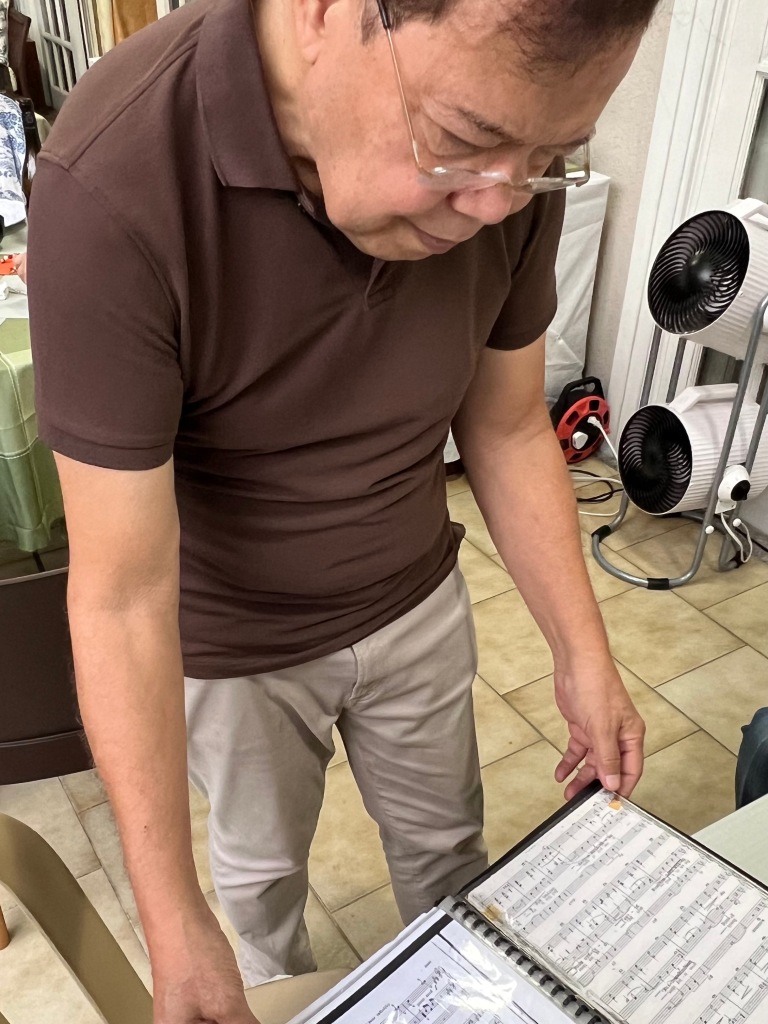Penman for Sunday, February 5, 2023
WE CELEBRATE National Arts Month in February in the Philippines, but it came a little early for me this year, in a January packed full of memorable cultural events that reminded me of how much we’ve missed during the long pandemic.
First off was a trip to Bacolod for a preview of the celebrated theater director Anton Juan’s new film, Amon Banwa Sa Lawud (Our Island of the Mangrove Moons). I’d known, of course, of Anton’s stellar work in theater for many decades now, but this was the first foray of his into cinema that I was aware of, and I—and the select audience that attended the preview at the Negros Museum’s Cinematheque—was not disappointed.
Set and shot in the island-community of Subac in the city of Sagay, and based loosely on Thornton Wilder’s seminal play “Our Town,” the film chronicles the lives of villagers whose fortunes are inextricably wedded to the sea. Isolated from many of society’s most basic comforts, they survive through hard work, faith, and ambition, despite the many threats they face—among them, roving bands of pirates and, not too subtly suggested by a floating buoy, Chinese vessels encroaching on their fishing grounds.
Shot in ten days with a mostly amateur cast, the film is a tribute to Pinoy industry and courage, and also of the sense of community that seems to have frayed for our people on a national scale. I remarked after the screening that most of us have lost touch with our maritime culture—the sea hardly figures in our literature, for example, except as a romantic backdrop—despite the fact that ours is a country of many islands like Subac. Anton’s film offers hope—but also delivers a stern warning about the dangers hovering on our national horizon. Kudos to the Erehwon Center for the Arts and to its founder Raffy Benitez, among other producers and sponsors, for making this film possible.
The second event that my wife Beng and I were privileged to attend was a musical tertulia at the historic Acosta-Pastor ancestral home in Batangas City, hosted by everyone’s musical tito, Atty. Tony “Tunying” Pastor. Every year, during the city’s fiesta, Ka Tunying sponsors a performance of renowned artists at his family’s home, which is a living museum of sorts, with a full-sized caruaje greeting visitors on the first floor.
This year, thanks to an invitation from the writer-curator Marian Pastor Roces, we were treated to a special program presented by the famed soprano Rachelle Gerodias, her tenor husband Byeong In Park, and tenor Nohmer Nival, fresh from their performances in last December’s “Turandot.” As was his wont, Ka Tunying—a music graduate from UP—joined the trio on the piano, and even sang gamely along.
The repertoire comprised crowd pleasers like “Mutya ng Pasig” and “Nessun Dorma,” and the audience responded warmly, with more spontaneity than they could have shown at the CCP or some such venue. Somehow, the classics felt right at home in the 140-year-old house, which had resonated with music for decades, whose bright wooden floors had welcomed generations of guests eager for a day of revelry and good food (which was served downstairs, after the mini-concert).
Most fascinating, however, was an evening we spent in Manila late in January with an old friend, the tenor and businessman Francisco “Frankie” Aseniero. In his other life as a bright young economist, Frankie had been our boss at the National Economic and Development Authority in the 1970s, where NEDA Director-General Gerry Sicat perhaps unwittingly nurtured a corps of writers and artists in his staff, including the late playwright Bienvenido “Boy” Noriega.
When we met Frankie again recently to welcome home another officemate, the prizewinning Filipino-Canadian poet Patty Rivera, I asked him about his music, as he now spends most of his days as a gentleman-farmer in Dipolog, where his family has roots. (One grandfather was a student of Rizal, while another was a Swedish-American Thomasite—but that’s another long story.) He has concertized all over the world, was active with the UP Concert Chorus and the Madrigal Singers, and at one point had to choose between music and economics for further studies. He took the pragmatic option and joined NEDA, but never really let go of his singing.
One very interesting thing I learned during that chat with Frankie was how, back in the 1970s, he sang and recorded Filipino translations of classical and popular operatic pieces by the late Rolando Tinio. “We would be having lunch, and Rolando would just write his translation over the score on the table, and it would be perfect,” recalled Frankie’s wife Nenette. Tinio, of course, was a genius, for which he was rightfully named a National Artist, albeit a difficult person for some others to deal with (there’s an explosive episode recounted by the film director Mike de Leon in his two-volume memoir Last Look Back about an encounter with Tinio at the 1978 Metro Manila Film Festival). I had the privilege of having one of my plays directed by Tinio at the CCP as a young playwright, but thankfully escaped the edge of his scathing derision. At any rate, I was enamored of his Filipino translations for Celeste Legaspi in the mid-1970s—it’s an album I’ll never tire of listening to, especially the soaring “Langit Mo, Ulap Mo” (Michel Legrand’s “Summer Me, Winter Me”)—and learning that he also translated operatic and Broadway pieces intrigued me.
Frankie obliged by inviting us to his home for a soiree and a personal concert, featuring such popular favorites as “Yakap Mo’y Aking Napangarap” (“I Have Dreamed” from “The King and I”), “Wari Ko’y Di Ko Kaya ang Mag-isa” (“Stranger in Paradise” from”Kismet”), and “Ganiyan ang Aking Giliw” (“And This Is My Beloved” from “Kismet”). We had a good laugh over “Laging Nag-iiba Pusong Babae,” better known as “Donna e Mobile” from “Rigoletto.”
I can only wish that Frankie (and other Filipino singers) would make a studio recording of these Tinio translations for commercial release. It’s hidden treasure I was lucky to stumble on, but it deserves to be heard and enjoyed by many millions more.







